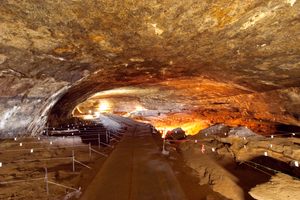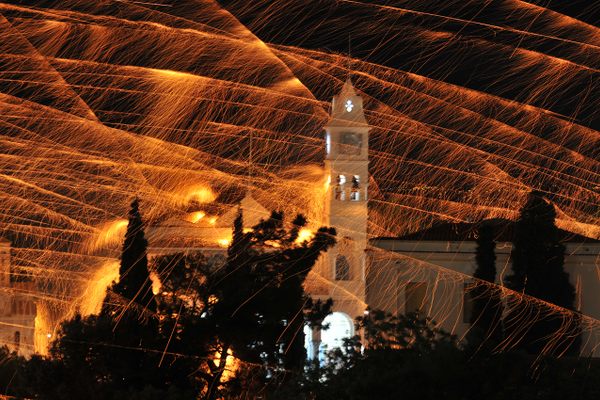About
These engravings, estimated to be between 1,000 and 2,000 years old, are thought to be part of a sophisticated religious art associated with ritual specialists in Bushman or San society called medicine people or shamans. These shaman were believed to use the power they received through controlled use of trance to heal the sick and make rain. It is suggested that many of the engravings were inspired by visions experienced during trance, and were depicted on the rocks so that others could share and draw inspiration from them.
It is believed that the engravings showing only part of an animal on a broken stone, were originally calved like that at the edge of a stone, as if the animal is emerging from or departing to the spirit world.
Sites chosen by the artists for their engravings were probably significant places in local beliefs. The andesite rock surfaces at Wildebeest Kuil may have been, to the artists, a kind of interface with the spirit world.
The engravings were made using the pecking technique whereby a hard, pointed stone is used to chisel away the outer crust of the rock, exposing the lighter colored rock beneath. With time, the exposed portions have become as dark as the original outer crust.
When Wildebeest Kuil was documented in 1968, 178 individual engravings were recorded. A detailed survey has since revealed over 700 markings (including smoothed surfaces), more than 400 of which are engravings.
Related Tags
Know Before You Go
Take the Barkly West Road out of Kimberley. Just after the turn to Homevale on your right, the Wildebeest Kuil Rock Art Centre is immediately on your left.
Community Contributors
Added By
Published
April 10, 2011
Sources
- Wikipedia: Wildebeest Kuil Rock Art Centre: http://en.wikipedia.org/wiki/Wildebeest_Kuil_Rock_Art_Centre
- South Africa Holiday: Wildebeest Kuil Rock Art Centre: http://www.southafricaholiday.org.uk/places/m_nc_wildebeestkuil.html
- McGregor Museum: Wildebeest Kuil: http://www.museumsnc.co.za/aboutus/depts/archaeology/wildebeestkuil.html




















